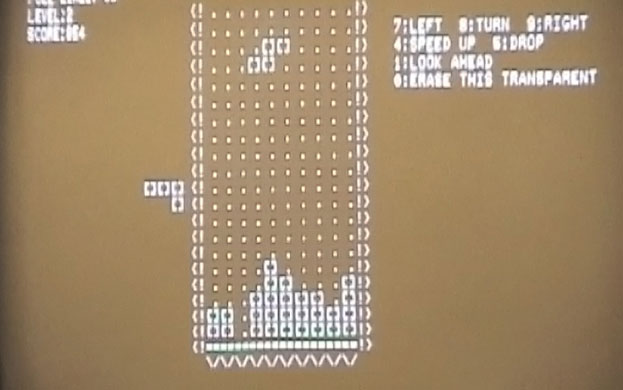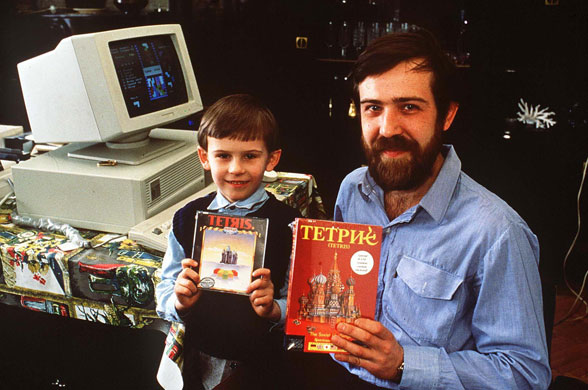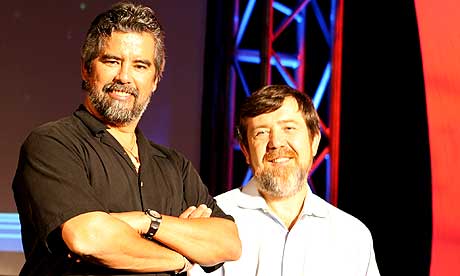
Tetris turned 25 yesterday (or today, depending on where you sit on the international date line). 25 years ago Russian progammer Aleksei Pazhitnov sat down and wrote the most addictive game ever.
It is arguably the greatest Russian invention ever. Greater even than the Great Moscow Circus.
The Guardian has a great feature on the game to celebrate the milestone.
Twenty-five years ago, inside the bowels of the Soviet Academy of Sciences in Moscow, a young artificial intelligence researcher received his first desktop computer – the Soviet-built Elektronika 60, a copy of an American minicomputer called a PDP-11 – and began writing programs for it.
But not numerical ones. He ended up creating one that would infest the dreams of those who played it, spurring addictions and even the suspicion that it was a Russian plot to divert the youth of America in a pointless exercise.
Here’s what it originally looked like…

And here’s what the creator looked like in 1989…

And here’s what he looks like now (on the right)…

And here are all my previous Tetris posts to mark the occasion.
Comments
During my days as a heavy Tetris user I would play the game in my mind every time I closed my eyes. This became an unwanted distraction during times of prayer.
Possible solutions were:
1. Stop closing my eyes while praying
2. Stop praying
3. Stop playing tetris.
I went for option three.
Am I alone in this experience?
Both Robyn and I have experienced similar problems – though our forswearing Tetris came as a result of our predominant Tetris laptop losing its arrow keys to a hot chocolate.
Tetris is popular because it has been proven to reduce stress and enhance brain power. The most notable was a UK study showed Tetris helped people that were victims of trauma reduce flashbacks.
As a documentary-article clearly points out, today’s video games spend millions and must use violence and marketing to achieve even a percentage of what Tetris has accomplished.
It’s amazing how many people playing now. Must see, http://tinyurl.com/r97xna